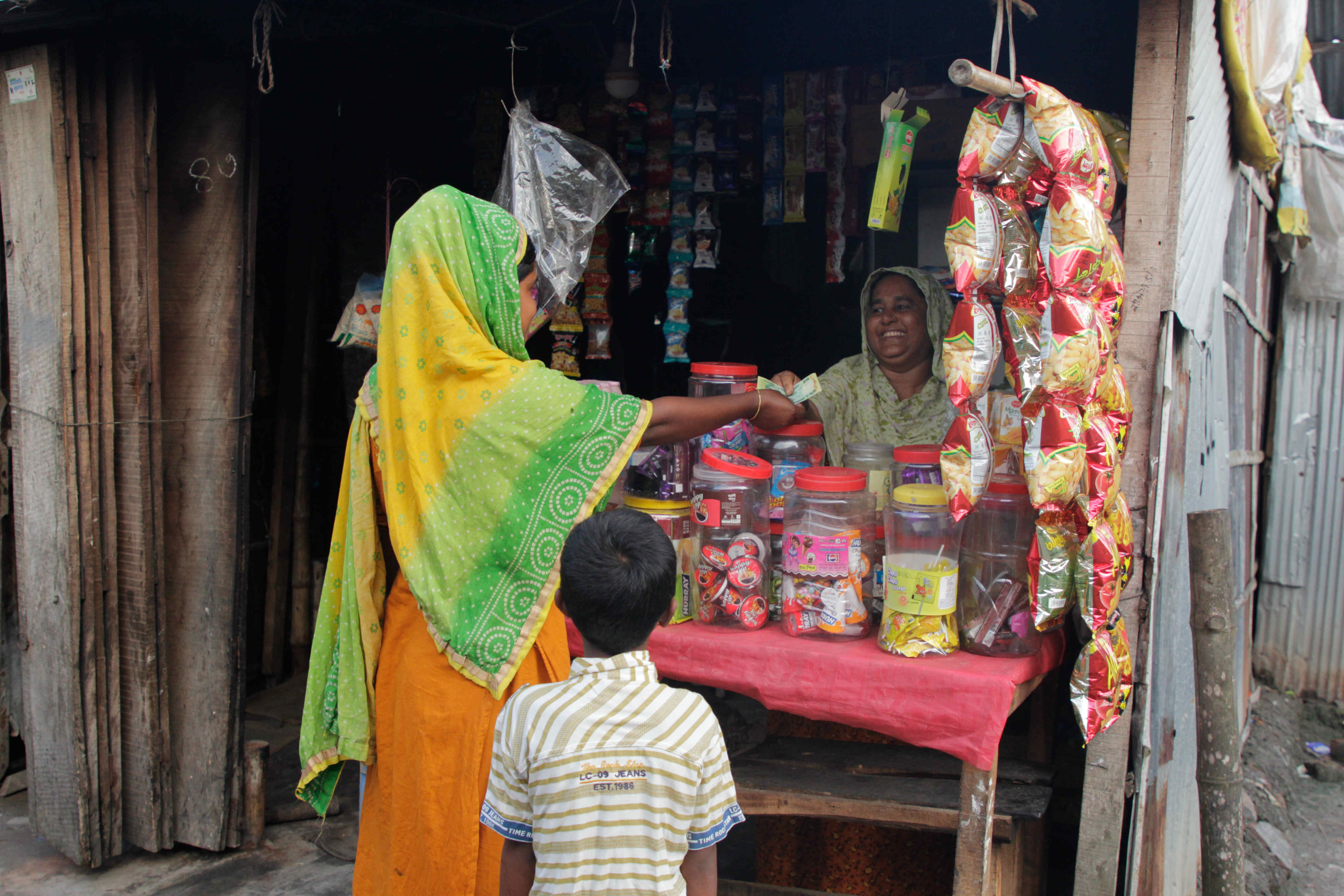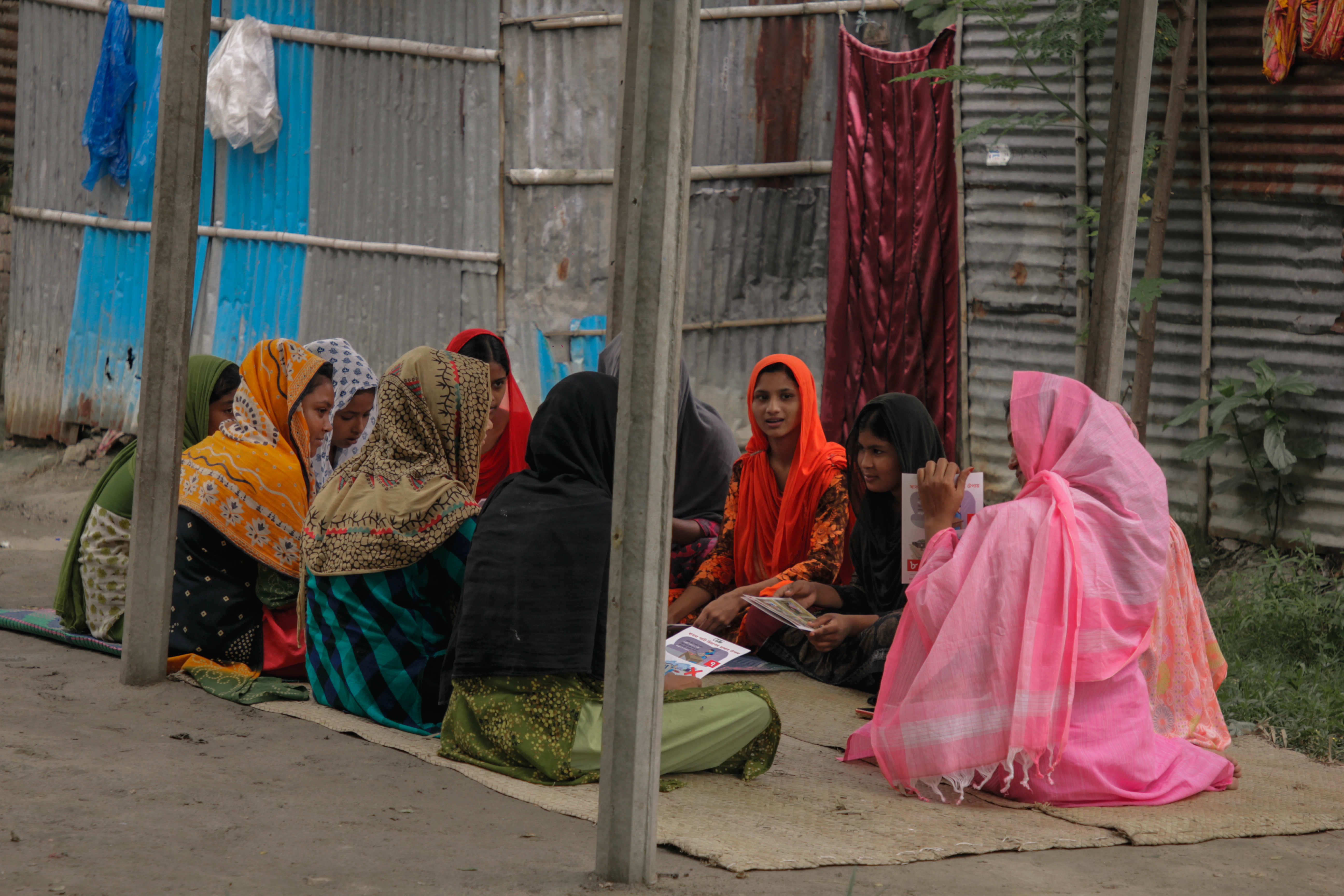Slum residents building urban resilience against climate change in Bangladesh
Patient, predictable, accessible funding
Build understanding
Invest in local capabilities
Address structural inequalities
Flexible programming and learning
Ensure transparency and accountability
Organization: CLIMATE BRIDGE FUND
Donor: KFW AND BRAC
Beneficiaries: 41892
In the slums of Khulna in Bangladesh, climate migrants and other residents of the city’s slums are building their resilience to extreme climate conditions through the Climate Bridge Fund, an international-backed initiative that draws on the knowledge and insights of local leaders.
Bangladesh’s low-lying topography and location on the Bay of Bengal make it especially prone to climate change induced floods, storm surges, riverbank erosion and salinity intrusion. Compelled to migrate to urban areas cities to secure due to the increasingly extreme climatic conditions, millions of climate migrants have in recent decades nonetheless found themselves exposed to new risks and vulnerabilities in slums.
In 1988, Parvin Begum and her family lost their home to a devastating flood, and were forced to move to the Greenland Abashon Slum in Khulna, the third-largest city in Bangladesh. Unfortunately, their difficulties continued. After migrating to the slum, they were confronted with a new set of climate hazards including continuous exposure to very heavy rainfalls, waterlogging, cyclone and storm surges and salinity intrusion in groundwater resources.
Parvin’s story is an all too common one. In the last 10-15 years, migrant and non-migrant slum dwellers alike in the southwest of Bangladesh are regularly exposed to damage to their houses, insufficient water, sanitation and hygiene (WASH) facilities, and a lack of access to basic services. As most residents work in the informal sector, these weather events have a significant influence on their incomes.

Climate Bridge Fund
Vulnerable communities are often seen as almost passive recipients of project interventions, and lack agency to build resilience. In Parvin’s case, however, she acted as the agent of change for her family and the local community. For the past 30 years she has been a strong voice for change in her community, regularly in contact with local community leaders and councilors, in addition to becoming a trustworthy representative of her community with various NGOs.
To improve the resilience of the slum residents in the city, Caritas Bangladesh is implementing the Climate Bridge Fund (CBF) awarded project ‘Strengthening Resilient Life and Livelihoods for Climate Migrants (SRLCM) in Urban Slums in Khulna City Corporation (KCC)’. CBF is a trust fund established by Dhaka-based NGO BRAC with the support of the Government of Germany through KfW, the German state-owned development bank, and has involved the participation of local leaders such as Parvin from the design to implementation phase.
"Funding is often a big challenge for local organizations – who are often the closest to the communities affected by the impacts of climate change,” says Asif Saleh, Chair of the Board of Trustees of CFB. “The Climate Bridge Fund is helping local NGOs to support communities to adapt by bridging the funding gap. We are hoping some of these innovative projects will become proven scalable solutions that can be adapted across the global south to support internally displaced populations.”
During the design phase, the key challenges included waterlogging, unhygienic living environment, inadequate WASH facilities, and a lack of access to basic services (health, education, gas and electricity). With climate change in low-income countries often impacting women and children most, CBF awarded projects that would address structural inequalities, placing special attention on women.
A Slum Development Networking Committee (SDNC) was formed in Khulna by Caritas Bangladesh to ensure the sustainability of the project, with local NGOs consulting with it to ensure the approach was community led. As a local leader, Parvin was selected to assist the SDNC in identifying the vulnerable groups, and pinpointing their respective needs so that solutions are context specific. At present, she is working alongside staff members from various CBF-funded projects to bring sustainable solutions to her community.
“There are numerous difficulties here. But we are lucky that some of us were selected and the SNDC committee was created," explains Parvin. “The purpose of the SDNC is to identify the area-specific problems, and it holds two meetings every month. Upon identifying those issues, the project interventions were able to provide water facilities, and made the tuboils submersible. And then through other project interventions, drainage systems were created. Financial burdens were also reduced as cash grant support was provided and support for children's education was also improved.”

Climate Bridge Fund
To date, project interventions have included community toilets, water point, drainages, waste basket distribution for solid waste management, environment-friendly housing for, skills training on DRR, hazards, climate-sensitive and infectious diseases. CBF implementation partners discuss climate risks and uncertainties to develop the capacity of project staff who work directly with the target group. This field-level exercise significantly helps the partner organizations and the project team to improve their understanding on the most effective way to link their interventions with tackling the impacts of climate change.
Projects funded by the CBF place a premium on empowering communities, and ensuring funding can be accessed quickly and easily by the implementing organizations. This means it should not take more than six months between the submission of a concept and the first disbursement. To facilitate the monitoring of the implementation process, a quarterly monitoring mechanism exists that involves CBF visiting the fields, examining the development, and recording lessons learned. In addition, there is a procedure to revise the yearly work plan and budget after six months of execution to make them more practical and adaptable.
Transparency of the functioning of the projects is monitored and assessed through four layers. The CBF’s secretariat is accountable to its advisory committee, KfW and trustee board. Through these three bodies, all decisions are finalized, and everything reviewed and evaluated. As CBF projects adhere to a downward accountability mechanism, communities are aware of the budget and expenditures of each intervention, members of Community Based Organizations (CBOs) serve on procurement committees, periodic community reflections are collected, and there are established complaint mechanisms in projects where communities can submit complaints directly.